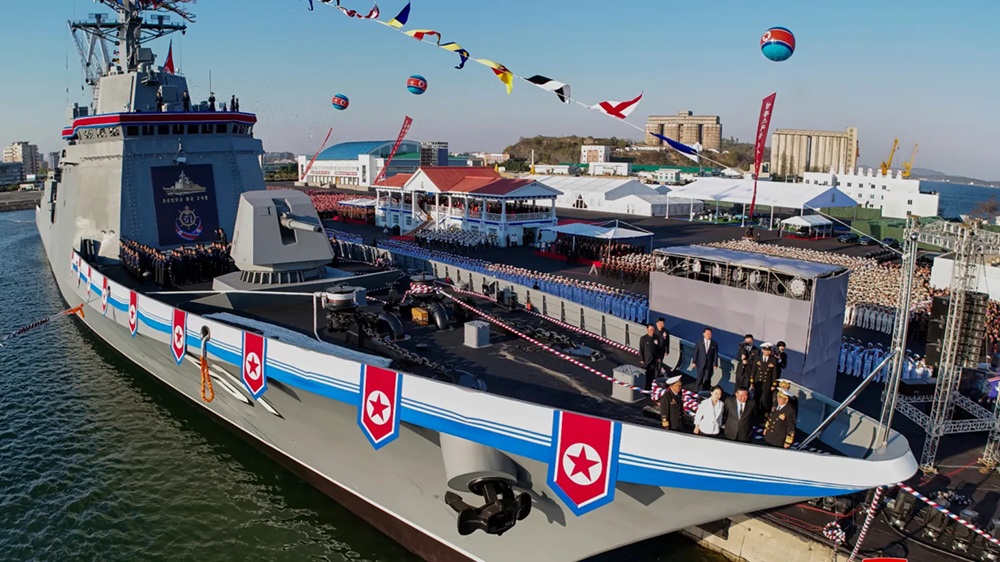In the tightly controlled and highly choreographed world of North Korean military propaganda, failure is not an option—or at least, it's not something the regime likes to admit. But a recent misfire during the launch of a much-touted North Korean warship has left Supreme Leader Kim Jong Un fuming, according to sources within the South Korean defense community and satellite imagery analysts who closely monitor the reclusive regime’s movements.
While Pyongyang has yet to officially acknowledge the incident, evidence suggests that the launch of a new warship—believed to be part of North Korea’s ongoing bid to modernize its naval forces—ended in embarrassing failure. The incident has sparked internal purges, emergency meetings of top military brass, and renewed scrutiny of North Korea's increasingly bold maritime ambitions.
A Grand Display Gone Wrong
North Korea’s state-run media had been hyping the unveiling of a new "cutting-edge" naval vessel for weeks, calling it a "symbol of our invincible power on the seas." The warship was expected to be a major show of strength, coinciding with recent escalations in maritime provocations against South Korean and Japanese vessels.
However, according to satellite imagery and intelligence leaks from South Korea’s Joint Chiefs of Staff, the event did not go according to plan. During what was meant to be a triumphant launch from a naval facility in Sinpo—a key shipbuilding hub on the country’s east coast—the warship either failed to launch properly or suffered significant mechanical issues during its maiden voyage.
Some reports suggest the vessel listed heavily shortly after entering the water, raising the possibility of hull instability or engine failure. Other analysts speculate that the warship may have prematurely activated one of its weapons systems, causing internal damage. Either way, the launch, intended as a clear message of defiance to Western powers, backfired spectacularly.
Kim Jong Un’s Anger on Full Display
The failure reportedly did not sit well with Kim Jong Un, who was said to be watching the launch from a specially erected viewing platform. Sources indicate that Kim left the site abruptly and later convened an emergency session with top military officials and scientists associated with the project.
According to South Korea’s National Intelligence Service (NIS), Kim expressed "extreme dissatisfaction" and may have ordered disciplinary actions against several high-ranking figures in the naval engineering division and shipyard management. There are also rumors that at least one official has been removed from their post, though the opacity of the North Korean regime makes confirmation difficult.
Observers point out that Kim's recent speeches have emphasized "flawless loyalty and technical perfection" in military projects, a theme likely to become more pronounced in the wake of this public embarrassment. Some fear that the failure could lead to a purge reminiscent of past crackdowns, such as the 2013 execution of his uncle Jang Song Thaek.
A Broader Naval Strategy at Risk?
The botched launch is not just a political misstep—it could be a significant setback for North Korea's larger military strategy. In recent years, the regime has made a concerted effort to expand and modernize its navy, traditionally seen as the least developed branch of the Korean People's Army.
This modernization push includes new submarines, missile corvettes, and unmanned underwater vehicles. Analysts have noted increased activity at naval bases, more frequent testing of sea-based missiles, and propaganda emphasizing naval heroism. Pyongyang appears to be modeling its strategy partly on Iran’s asymmetric maritime tactics, which involve swarming larger ships with smaller, more maneuverable vessels.
However, the failed warship launch raises questions about North Korea’s technical capabilities and the efficacy of its military-industrial complex. Despite impressive rhetoric, the country remains plagued by sanctions, limited access to modern components, and systemic inefficiencies. The gap between Kim’s ambitions and the reality on the ground could grow wider, especially if internal fear starts stifling innovation.
Regional Ramifications
The implications of this failure extend beyond North Korea’s borders. South Korea, Japan, and the United States are likely watching closely, not only to assess the regime’s military capabilities but also to gauge Kim’s next move.
Historically, Kim has responded to embarrassment with aggression—either rhetorical or military. Following failed missile tests in the past, North Korea has often doubled down with provocations, such as short-range missile launches, cyberattacks, or artillery fire near disputed maritime zones.
This time may be no different. The botched warship launch could be used to justify further escalations, which Kim could portray as a way to rally nationalist sentiment and distract from the failure. The situation will require careful monitoring, especially in the Yellow Sea and Sea of Japan, where North Korean naval activity is expected to increase.
Conclusion
While North Korea is no stranger to military theatrics, the recent failure of a key warship launch serves as a rare glimpse behind the curtain of the regime’s tightly controlled image. Kim Jong Un’s fury underscores how high the stakes are for a regime that trades in both symbolism and intimidation.
The coming weeks will likely reveal how far Kim is willing to go to reclaim the narrative—and whether this failure becomes a mere blip or a trigger for a broader, more dangerous shift in North Korea’s military posture.
